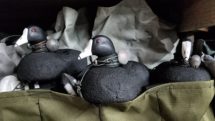Herter’s Decoys
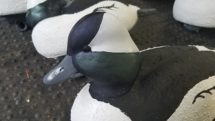
After sustaining an injury on a family vacation in Maui this past February ( long story ) I’ve been prescribed mandatory down time and decided to get some work done on a portion of the decoy rig. In particular, some well worn Herter’s solid styrofoam duck decoys. Much of our early hunting rig originated from decoys purchased when I began the obsession with diver and sea duck hunting in the early 1990’s . Additionals accumulated over the years included a handful dating back to my late grandfather’s duck rig from his hunts in the 60’s and 70’s. Resilient to stray shot and hard hunts, who would have thought these old styrofoam decoys would now become collectables and heirlooms ?! Many of these dekes had been well used over the years and it was time to give them some much needed attention.
The majority of our Herter’s rig consisted of magnum 72 and lifesize 63 “Ultimates” models in both diver and puddler duck bodies. These decoys were some of the last models Herter’s produced before all plastic decoys took over the majority of the market– a heavy plastic layer coated on the topside greatly increased their resiliency over the basic all styrofoam models. Custom burlapped, “suc duck” and original flat bottom models from the early 60’s made up the remainder of our Herter’s rig.
Some of the downfalls of the later Herter’s decoys were their cheap eye bolts, hollow/brittle plastic heads and that exposed iron metal inset within center of the keeled models. I’m certain waterfowlers accustomed to hunting freshwater lakes and rivers may have less of these issues, but over the past decades 90% of our usage has been hunts on salt or brackish water and these particular parts of some decoys had been damaged and degraded over time.

before…the ugly underbelly
The restoration begins —
I began by using a combination of West System epoxy, fiberglass and a walnut shell/sawdust mixture applied to the undersides of each decoy to seal any exposed styrofoam and those rusty iron keels. In addition, a light coat of epoxy was added to the topsides plus a sprinkling of this “restle coat” mixture to give the decoys some texture and grip. Titebond 3 glue also works well for the restle coat process.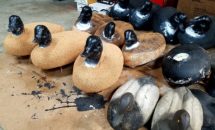

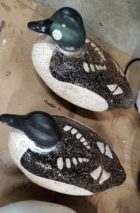
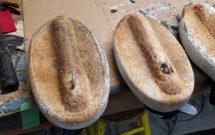 Next I patched any stray pellet holes in the bodies with PC11 epoxy and affixed updated solid core heads with installation of stainless steel eye bolts. After the epoxy had cured, decoys were lightly sanded then coated with a liberal application of Zinser oil primer as a base coat. The final paint was a combination of Ronan oils, Krylon rattle can flats and enamels for the bills. When this was dry and well cured the dekes were coated with a clear matte spray for an extra layer of resiliency. Now these old Herter’s are ready for a few more decades !
Next I patched any stray pellet holes in the bodies with PC11 epoxy and affixed updated solid core heads with installation of stainless steel eye bolts. After the epoxy had cured, decoys were lightly sanded then coated with a liberal application of Zinser oil primer as a base coat. The final paint was a combination of Ronan oils, Krylon rattle can flats and enamels for the bills. When this was dry and well cured the dekes were coated with a clear matte spray for an extra layer of resiliency. Now these old Herter’s are ready for a few more decades !
The finished products —
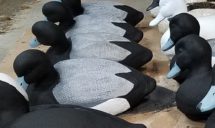
Model 72 broadbill
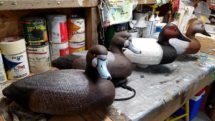
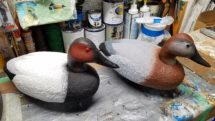
Model 72 “flat bottom” can pair

Model 81 and 92 black brant
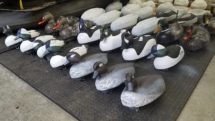
Model 63 buffs and 72 goldeneye
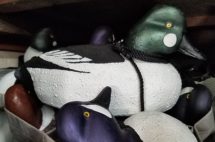
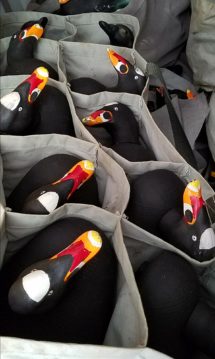
Model 72 scoters
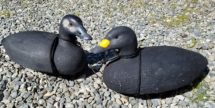
Model 72 and suc duc puddlers in the mix


…even some old style, flat bottom model 63’s made up as coots !
